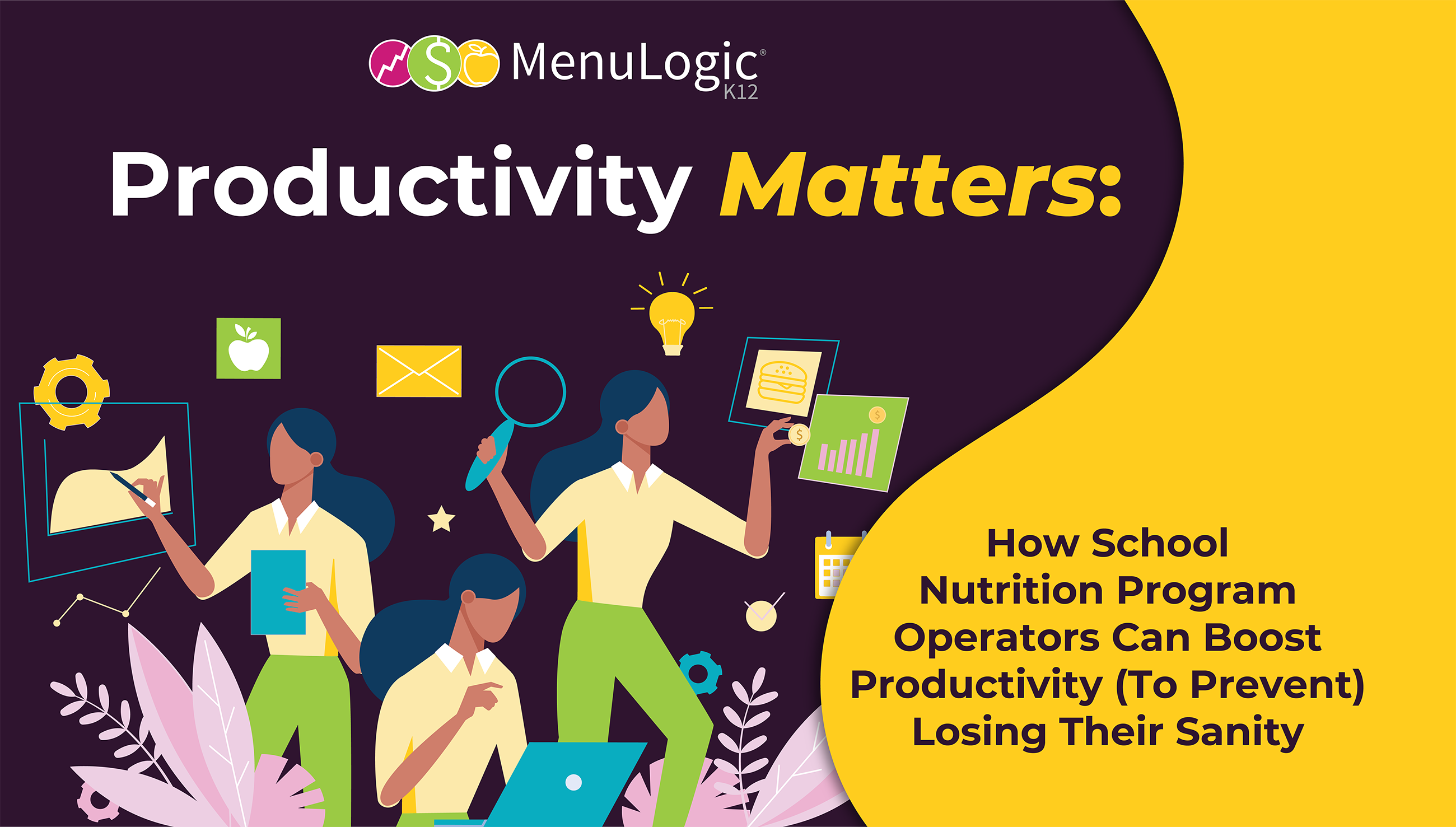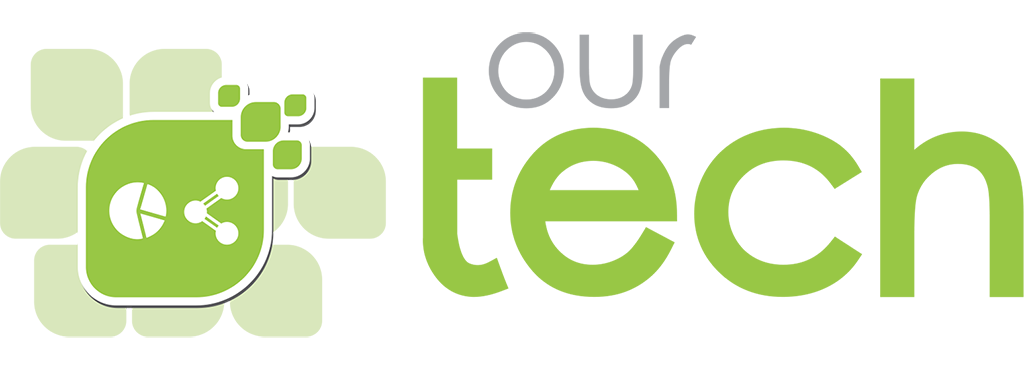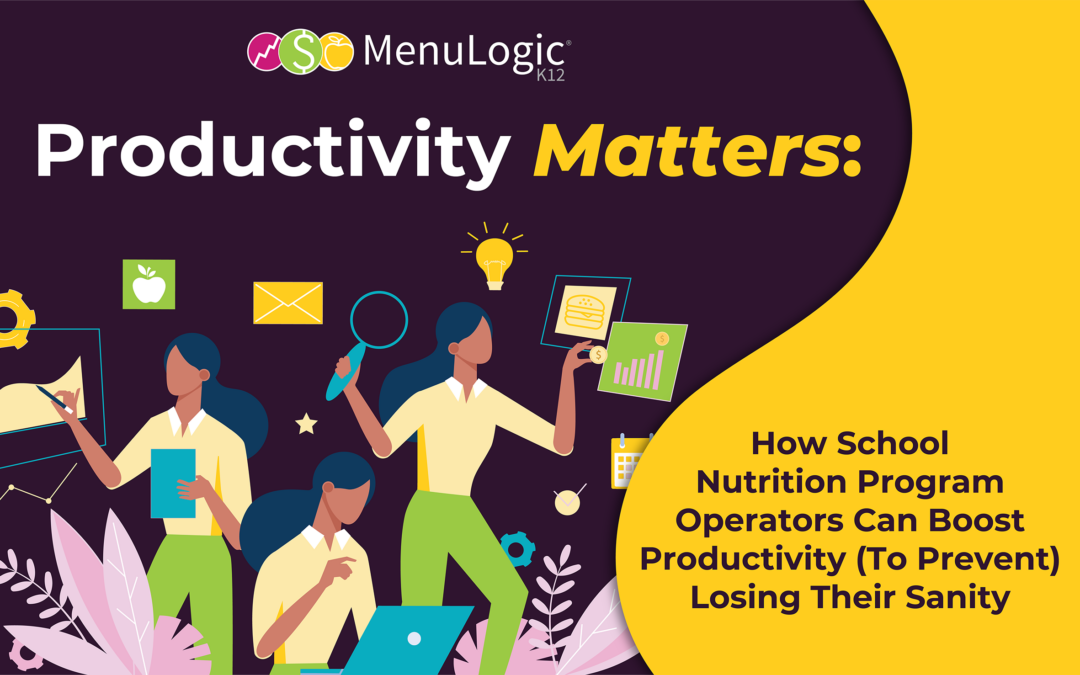School nutrition program operators and their teams have a significant burden as they orchestrate, prepare, and distribute food for hundreds or thousands of students every day.
Unfortunately, budget constraints, persistent hiring challenges, and timely operational realities mean that help isn’t likely on the way.
As a result, some schools have resorted to enlisting administrators, administrative assistants, teachers, volunteers, and even students to help prepare and distribute meals. In other words, nutrition program operators must do more with less, relying on outdated administrative structures and understaffed teams to achieve critical outcomes.
Unsurprisingly, school nutrition program operators are stressed, overwhelmed, and do not typically have the authority (or often the budget due to the cost of benefits in schools) to add staff, particularly at the administrative level, which is often overlooked or pushed down on the priority list when students eating is the most immediate need.
Meanwhile, productivity remains paramount.
For many reasons, this approach is unsustainable. School nutrition program directors must remain productive, performing urgent tasks at a critical time without succumbing to the burnout epidemic that accelerates turnover.
Simply put, we need a more sustainable path to do more work better.
What if we accept that we can’t do it all and find a way to affect the productivity formula without having to request special permission from the district administration and school board? How can we creatively bring in (people) resources to help us without hiring a position with benefits?
The key is identifying services that can help you. Here are three ways nutrition program operators can begin pursuing that priority today.

Hire Freelance Contractors
The US freelancing workforce is expanding rapidly. According to one report, 59 million Americans completed freelance work in the past year, accounting for more than one-third of the US workforce.
Businesses are increasingly turning to freelancers to augment their in-house talent, allowing them to leverage their skills and talents without increasing overhead.
A recent LinkedIn small business survey found that 70 percent of small businesses have hired a freelancer, and 81 percent plan to hire more in the future.
Schools are already hiring contractors for construction projects, facility design, equipment repair, and other requirements. Schools could also turn to freelance talent to enhance their marketing, technology projects, and other critical tasks to support their school nutrition outcomes.
While creating permanent positions is complicated, requiring administration buy-in, school board approval, and political capital, adding contractors can be more flexible, enabling school nutrition program operators to deploy available resources with speed and agility.

Leverage Tech Solutions to Solve Specific Problems
Gone are the days when Microsoft Office served all your business’s needs. Today, estimates show that the average employee cycles through 13 different professional apps 30 times per day.
While you may be thinking that this dynamic can lead to app overload, let’s consider the “why” behind how businesses have reached this way of work. The solution to the “more work” problem is not to continue to try to fit that work into the same amount of hours or using the same tools than before that work existed. New, specialized software tools provide a path to see work differently and provide solutions in a way that was not possible before they existed.
These specialized subscription-based software solutions (SAAS) are accessible online and offer unique subscription models that help control costs and regulate expense expectations moving forward.
Often K-12 schools are outpaced by their business sector counterparts. Most schools leverage only two software models: point of sale and (some version of) menu planning. These software solutions all follow the same blueprint and are focused on transactional work.
Point of sale software should provide the method to perform required, transactional tasks quickly, effectively, and reliably (it should not take your time to support the software, it should be the other way around).
Menu planning affects so much more than the transactional work of ensuring compliance of a daily and weekly menu. The menu impacts the program’s entire operation and there is a real opportunity to use software to move beyond this to drive better decisions and enable more efficient workflows.
What’s more, these software solutions are decades old. While the software industry as a whole is rapidly developing faster, cheaper, easier to use, and more capable solutions, school nutrition program operators are trying to bring increasingly modern results from antiquated technology.
For example, while MenuLogic K12 provides menu design and production records, it also delivers insights and an alternative workflow solution that allow nutrition program operators to monitor and be in touch with operations in real time. This changes more than your tech stack. It provides an avenue to relieve stress of the unknown and only focus time on decisions that actually have an impact.

Help People Find Purpose
While leveraging freelance talent and software solutions can enhance productivity and further operational outcomes, engaging and empowering existing staff is still important.
After consecutive pandemic years and related school disruptions, many K-12 employees, including school nutrition workers, have lost their purpose and passion for serving students.
Leaders can help encourage productivity, reduce turnover, and enhance workplace culture by helping their teams find purpose at work. A 2022 Gartner survey found that 65 percent of employees said the pandemic caused them to rethink the role of work in their lives, and 56 percent “want to contribute more to society.”
Serving students in a school setting is a natural expression of this desire, and nutrition program operators can tap into that sentiment to help their teams connect work and purpose. In addition, leaders can make staff feel valued by investing time to facilitate their success.
Small changes can make a huge difference, and employees feel valued that you invested your time in understanding their struggles. Investing time in training or updating technology that improves both their day-to-day work and their professional impact can make a positive difference.
Ready to Improve Student and Program Outcomes?
For already-busy school nutrition program directors, productivity matters. Hundreds or thousands of hungry students show up every day, and it’s not enough to just “do more with less.” Instead, school nutrition program directors need the capacity to maximize productivity without compromising sustainability.
Ready to transform your program? MenuLogic K12 puts actionable insights and productivity drivers at your fingertips, enabling school nutrition program directors to boost productivity (to prevent) losing their sanity.
Visit https://www.menulogic-k12.com/ to learn more.


















